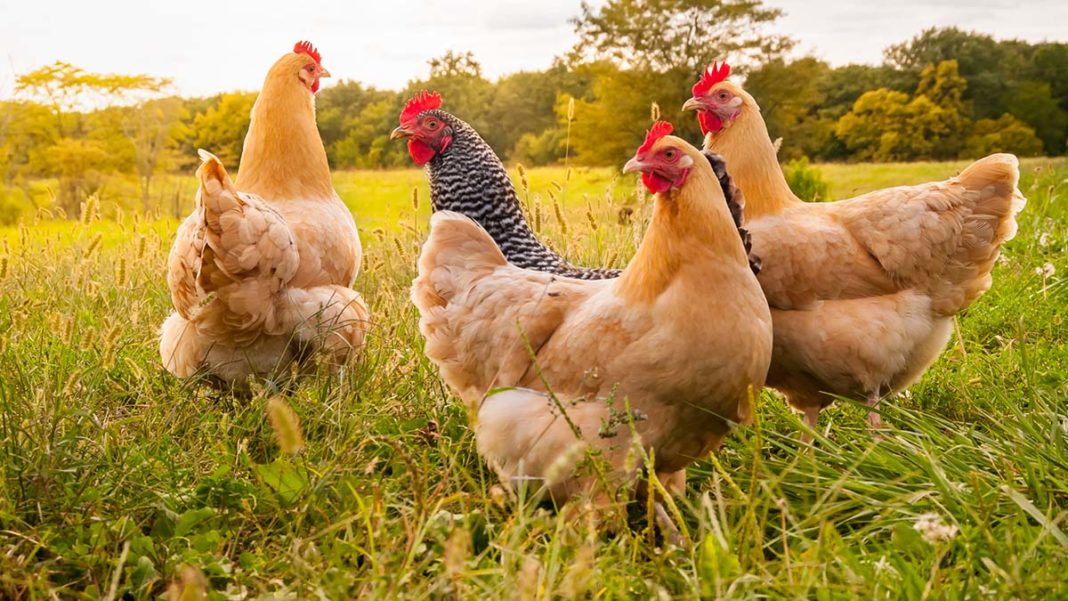MANITOULIN—News that a red-tailed hawk in the Waterloo region had tested positive for avian influenza (high pathogenic H5-N1 or HPAI) on March 22, compounded by confirmation of a case in a southern Ontario flock, has led to a ministry of Agriculture, Food and Rural Affairs (OMAFRA) advisory to all small flock owners warning that all Ontario poultry flocks that spend time outdoors are at risk of contracting the disease. Avian flu has been decimating poultry flocks across Atlantic Canada and the US in recent months.
With the growing popularity of home-grown poultry and eat local movements, the number of small flocks across the region has skyrocketed in recent years, even though larger producers fall under supply management systems whose quota pricings has locked Island producers out, the virus remains a concern for small flock operators of under 100 birds (the maximum number of birds allowed outside of the quota system).
OMAFRA held a webinar for small flock producers on March 30 which included an update on the status of the virus, information about the concerns posed by the virus and how to protect flocks.
“I’ve diversified my operation to provide my own little bit of insurance,” said Max Burt of Ice Lake’s Burt Farm Country Meats, a small flock operator who produces both chickens and turkeys for local consumption. “There does seem to be quite a bit of drought and pestilence out there these days.”
Mr. Burt noted that Manitoulin is particularly vulnerable to avian flu given that it lies in the flight path of many migratory birds. “You really need to be cognizant of the risks posed by the wild bird population,” he said. “People seem to want to keep them around so you do what you can to protect your flock.” Mr. Burt noted that in addition to migratory flocks posing a risk, there are those who are working on introducing wild turkeys and pheasants onto the Island.
Burt Farm chicken production is limited to 100 birds a year, noted Mr. Burt, but as part of his risk management strategy, he divides that production up into two cohorts.
The farmer laments one strategy that has been forced upon him by necessity—that of restricting access to the farm. He has two restriction zones and the farm is well-isolated from the retail operation located on the edge of his property.
“I would love to conduct more tours to let people see and learn about how their food is produced,” he said, “but you have to manage the risk.”
“It’s a tough call,” admitted Mr. Burt, “but you must be realistic. I face restrictions all the time, mostly set in place for the large operators, and you do what you can. Maintain social distancing. I don’t have multiple barns in multiple locations, so the risk of bringing in contamination isn’t so much an issue for me, but it can be an issue for larger operations.”
Mr. Burt said that he does maintain insurance to limit the impact of any catastrophic loss, but those programs have major limitations. “You have to have a loss of 80 or 75 percent before they even trigger,” he said. “So it does assist, somewhat, but if you have a loss two years in a row the trigger moves to where there is no longer any point.”
Burt Farm also limits the amount of outside equipment that comes on the property, being able to do their own barn cleaning and other maintenance chores that many farms use outside contractors or equipment rentals to accomplish.
“I also grow my own grain, so I have my own source of bedding,” he said. “You take all the precautions you can, keeping cost-benefit-analysis in mind, and then you cross your fingers.”
Costs are a big concern, because although Mr. Burt said he can stand behind his product as “the best there is,” he also must compete in a challenging market. “We sell to Manitoulin, an area that has an average income 60 percent of that of the rest of Ontario,” he said. “So even though we have the very best product, we have to keep the price where people can afford to buy it.”
At the end of the day, Mr. Burt says his best strategy might just boil down to diversification. “You might just say I don’t keep all my eggs in one basket.”
More information on how to protect your flock can be accessed at the poultry industry website: poultryindustrycouncil.ca/resources/biosecurity-and-disease.





